Toyota bz4X SUV is the marque’s first pure electric vehicle
The Toyota bz4X is our first chance to explore how the long-standing masters of mass automobile production make an EV
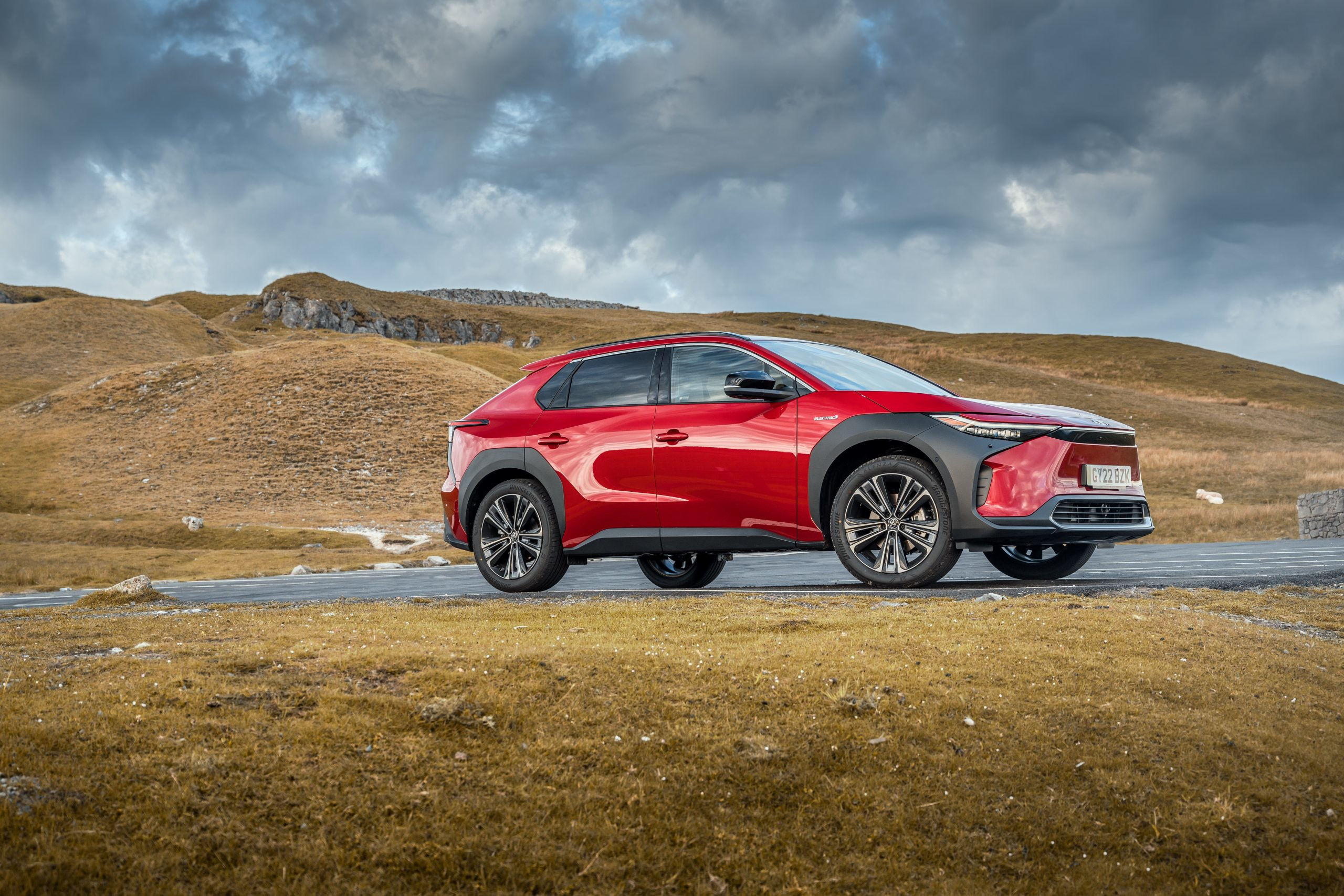
All eyes are on the Toyota bz4X – the marque’s first all-new electric vehicle (there is no hybrid or ICE alternative) – to see how this most innovative of brands has tackled the issues around electrification. The short answer is that it hasn’t really done anything different to its rivals. Unlike with hybrid powertrains, a category Toyota created and ruled for decades, it’s late to the EV game. The Japanese manufacturer’s vast portfolio is subtly chopped and changed depending on local market conditions (much like McDonald’s), and although it seems a bit lumbering at times, once it’s got the basics right it swiftly moves to create a category killer.
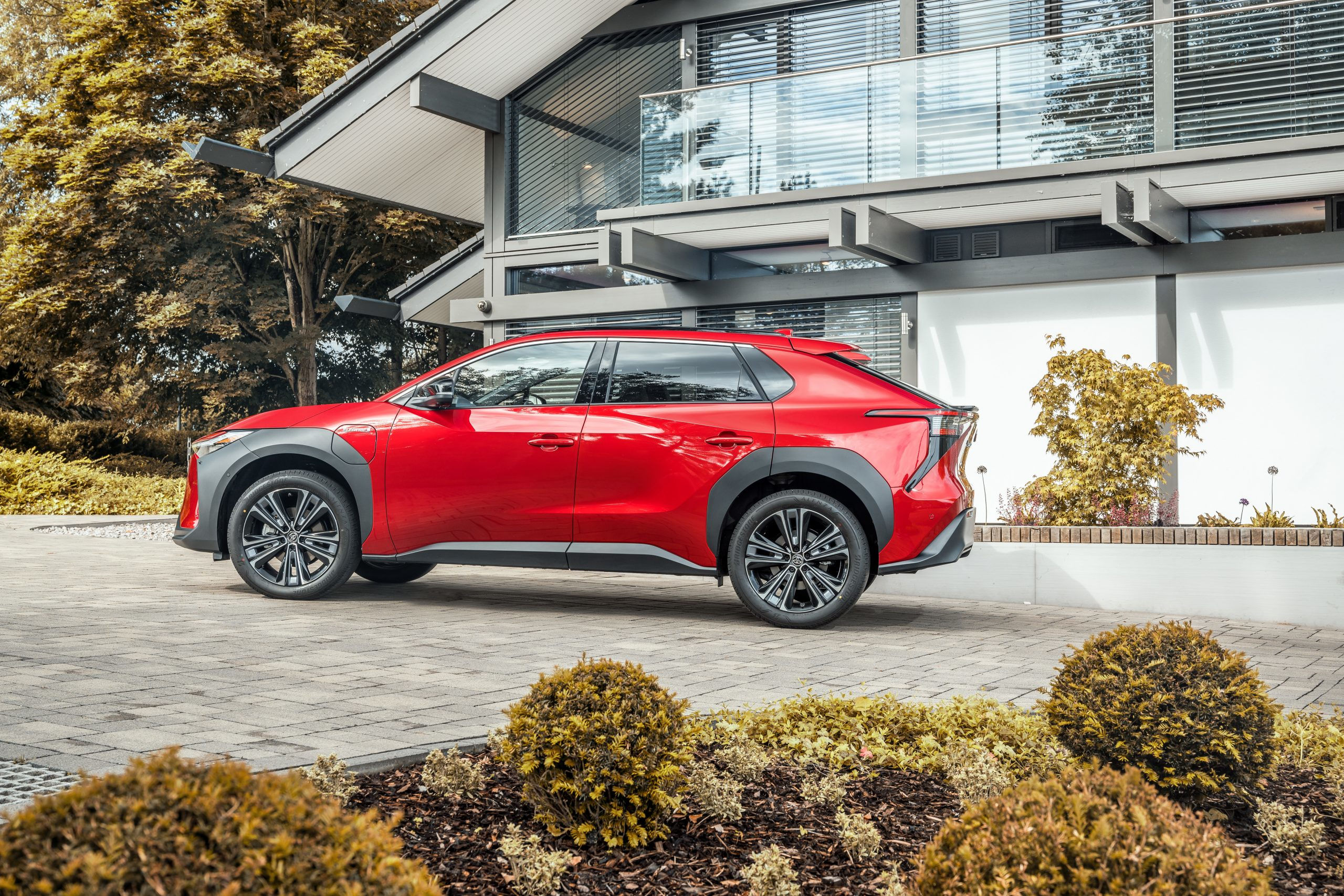
That’s not to say the bz4X is bad or even sub-standard. By any metric, it’s as good a mid-sized electric SUV as you can get these days – a sector that’s oversubscribed and aesthetically unambitious. Under the skin it’s closely related to the Subaru Solterra and Lexus RZ – the economies of scale must work hard to keep EV costs down.
Toyota bz4X electric SUV: a solid first step
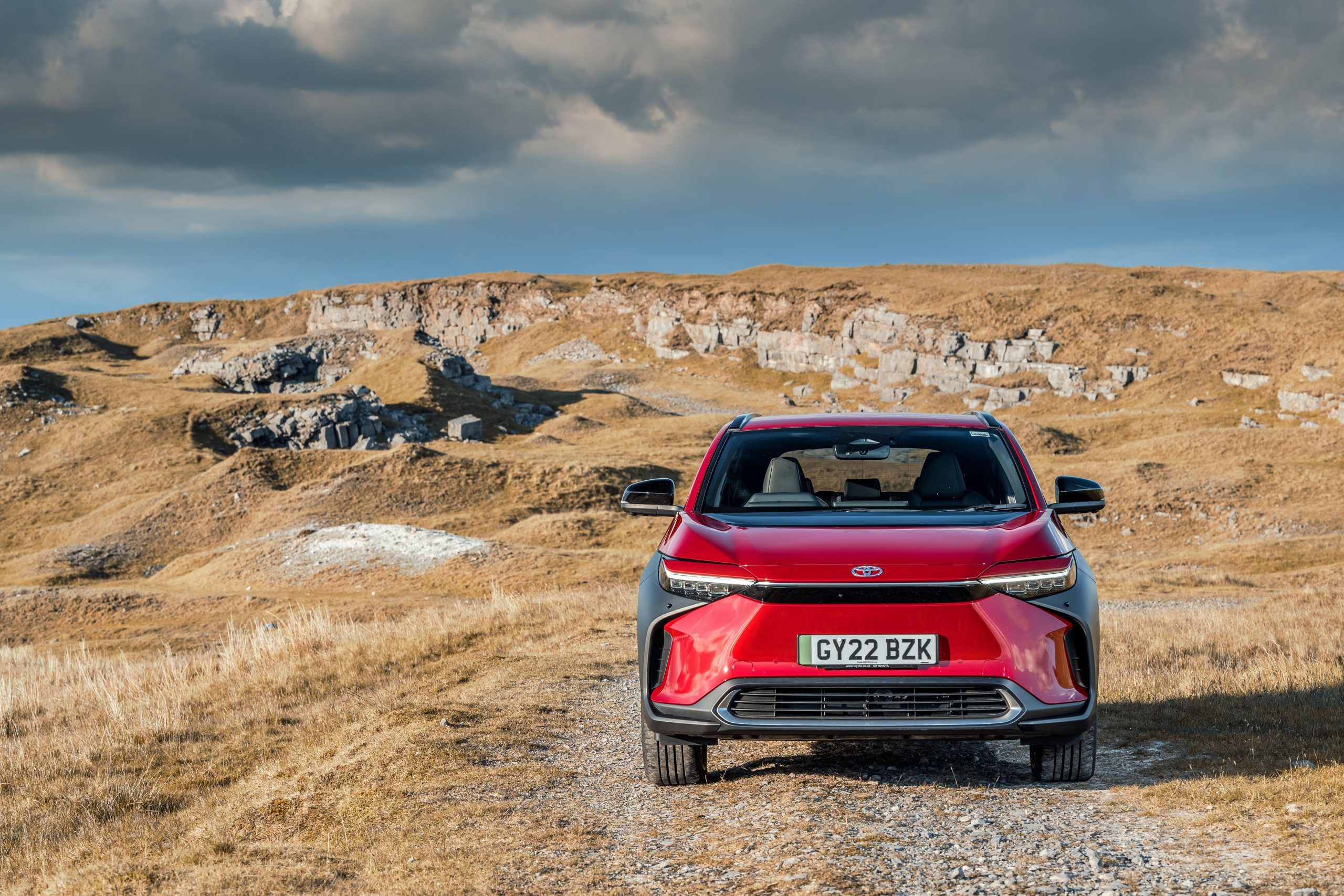
The Toyota also shares the Subaru’s chunky plastic wheelarches, a visual element that’s also common with the two smaller Toyota models it has the most affinity with, the new C-HR and the Aygo X (a hybrid and combustion-powered car respectively). This trio represents a perfect expression of the modern small to medium-sized SUV, practical family cars with no airs and graces, good levels of kit and durable, dependable engineering.
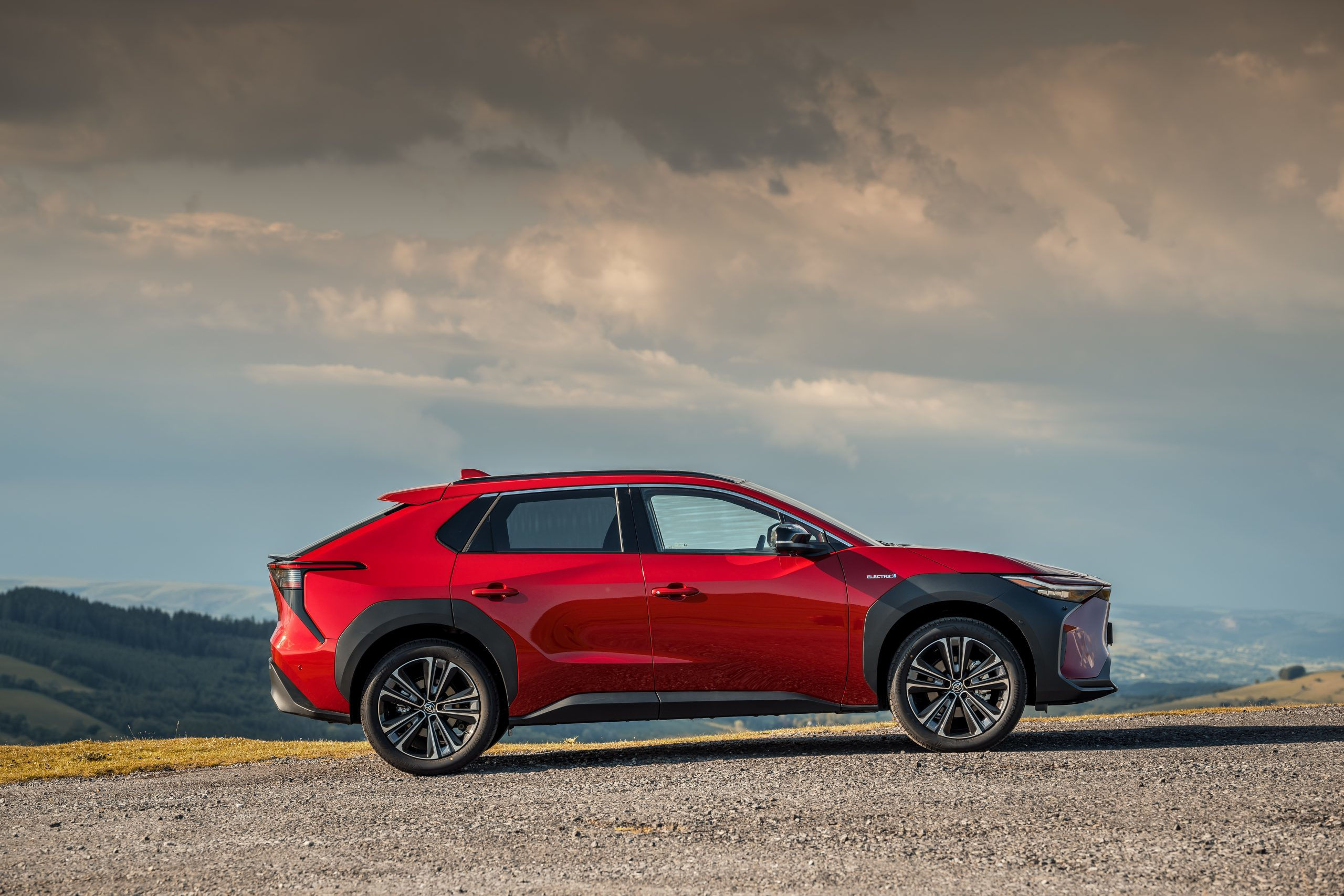
As the largest of the three, the bz4X also has the best claim to off-roading ability. It’s available with two- or four-wheel drive, but the latter sacrifices a bit of range (up to 318 miles versus 286 miles). As ranges go, it’s decent but not outstanding, and you’ll spend most time in ‘Eco’ mode, trying to eke out the maximum. The electric platform is Toyota’s new eTNGA modular architecture, which we’ll see crop up more and more as moves to full electrification gather pace.

The other thing that sets the bz4X apart is its long anteater-like nose, sculpted sides and animalistic rear haunches. Whilst it’s never been renowned for the visual elegance of its vehicles, Toyota is often capable of being wilfully different, and this is one of those times. Inside, the bz4X is very similar to the Solterra, right down to the driver’s instrument binnacle and the steering wheel, whilst the Lexus is a little bit more premium (and can be had with a yoke, not a wheel).
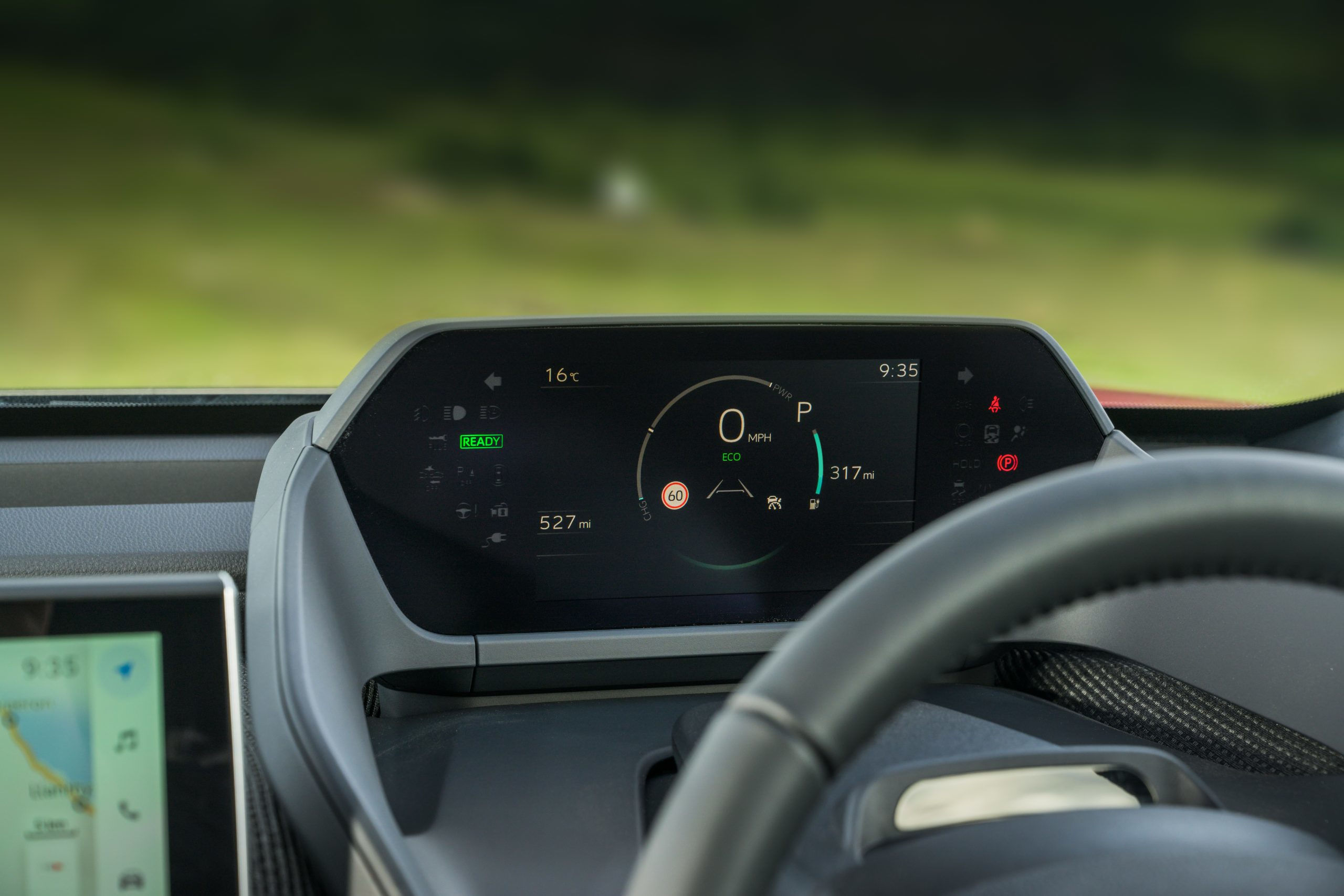
It's also a very easy car to live with, practically sized, ergonomically unthreatening and very well put together. Toyota’s quality control is still legendary, and it has pitched itself headfirst into the debate about EV longevity by offering a guarantee that the battery will hold at least 70 per cent of its capacity after ten years or a million kilometres.
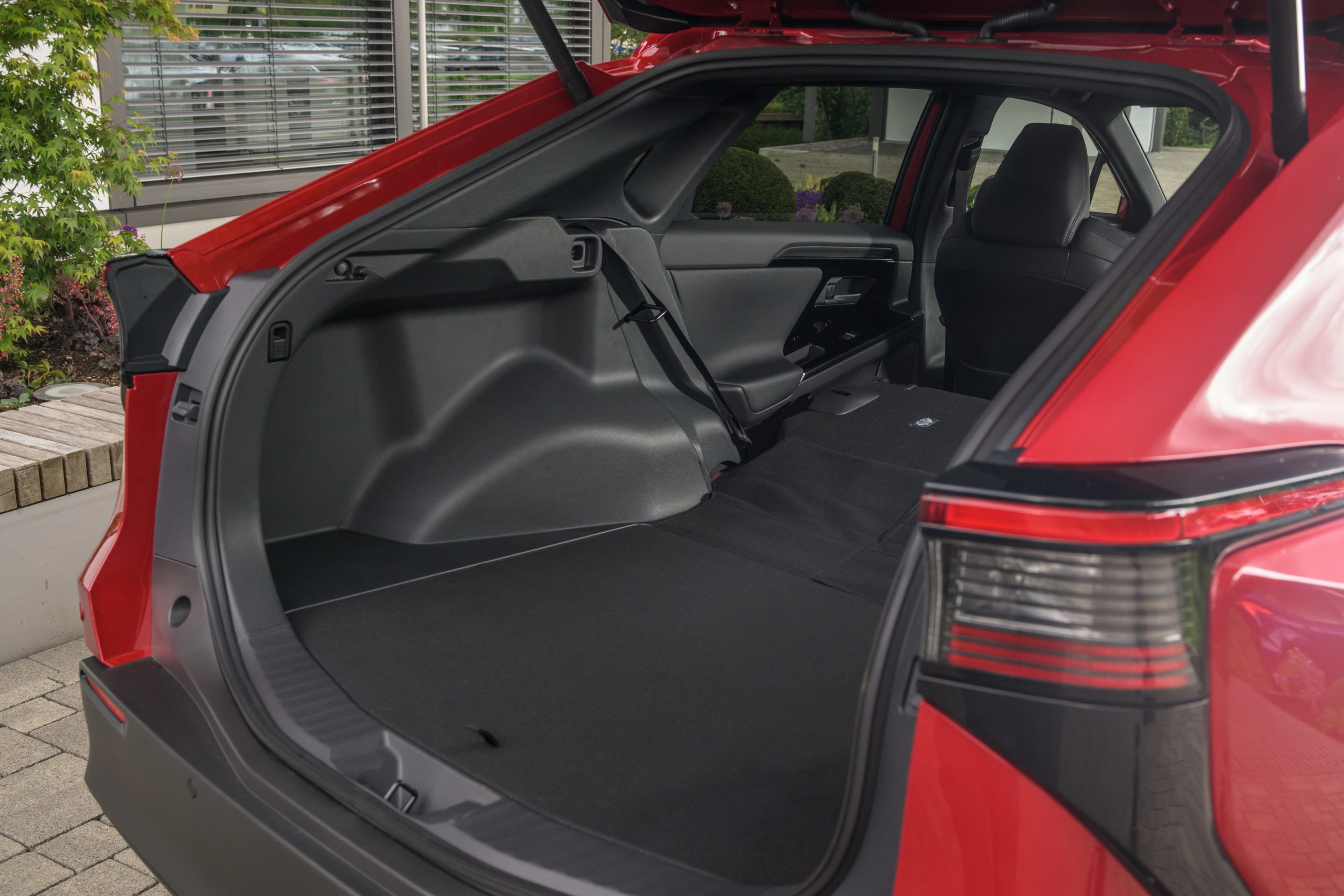
The Toyota bz4X is effectively a blank slate in terms of image. If you want a Toyota with character, go for something like a Land Cruiser, a new version of which was previewed at the 2023 Japan Mobility Show. On the other hand, many people are more than happy to trade self-conscious quirks for no-nonsense reliability.
Receive our daily digest of inspiration, escapism and design stories from around the world direct to your inbox.
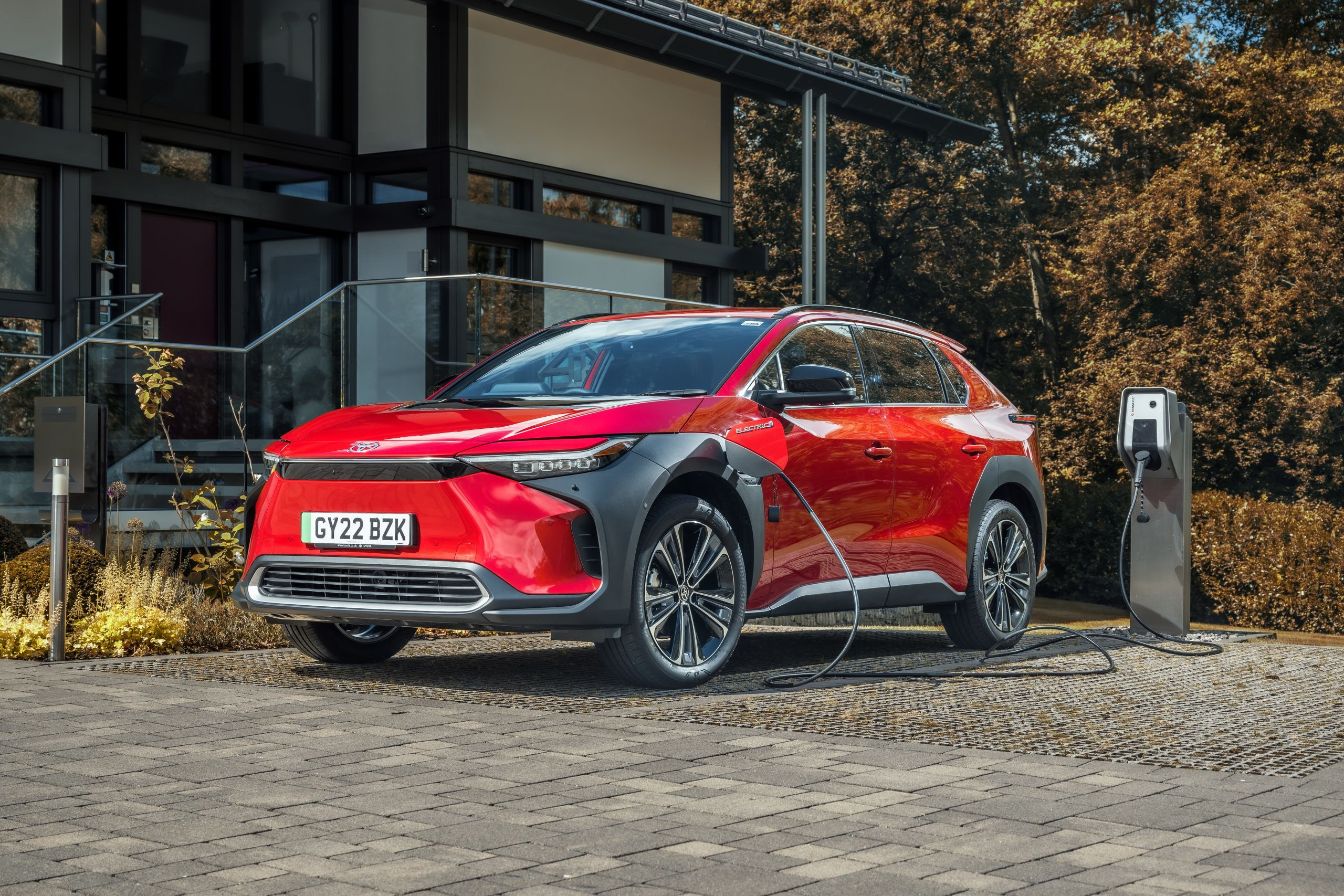
Perhaps what Toyota really needs to make is the EV equivalent of the Prius, a model that has sold over six million examples across five generations. Toyota has set 2035 as its target year for a 100 per cent Zero Emission fleet. We think the bz4X is a solid first step on a long journey.
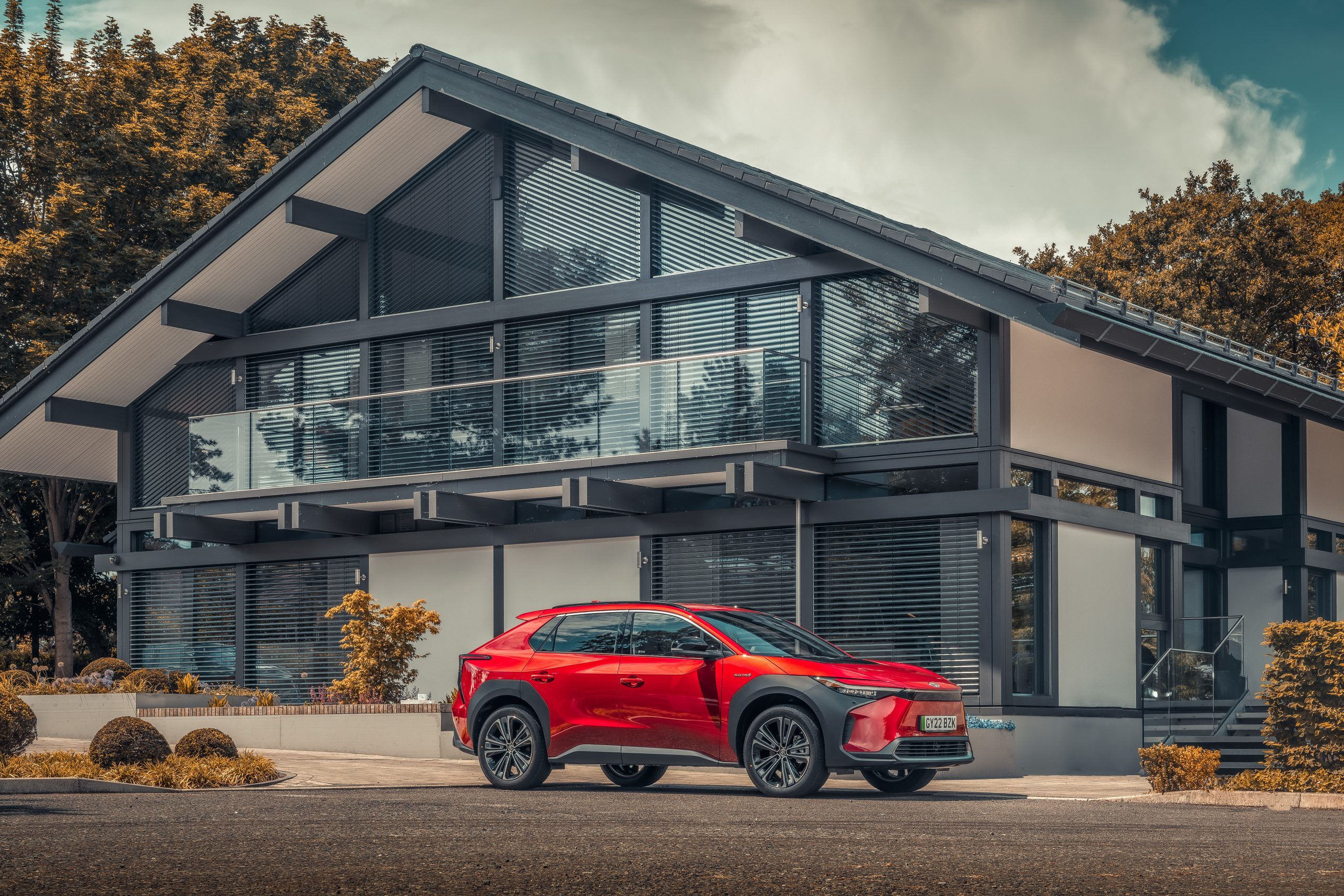
Toyota bz4X, from £42,860, Toyota.co.uk, @ToyotaUK
Jonathan Bell has written for Wallpaper* magazine since 1999, covering everything from architecture and transport design to books, tech and graphic design. He is now the magazine’s Transport and Technology Editor. Jonathan has written and edited 15 books, including Concept Car Design, 21st Century House, and The New Modern House. He is also the host of Wallpaper’s first podcast.
-
 Design Miami announces Dubai collectible design platform in collaboration with Alserkal
Design Miami announces Dubai collectible design platform in collaboration with AlserkalThe new platform will honour the region’s cultural heritage while highlighting its spirit of innovation
-
 Four new keyboards are fresh and functional desktop companions
Four new keyboards are fresh and functional desktop companionsMechanical keyboards are all the rage, bringing with them new ways of personalising your desktop. We’ve found four devices that hark back to the early days of computing
-
 RBW EV brings a much-loved classic sports car aesthetic into the modern era
RBW EV brings a much-loved classic sports car aesthetic into the modern eraThe RBW Roadster and GT hark back to a golden age of sports car design. Under the skin, these British-built machines feature bespoke all-electric running gear
-
 RBW EV brings a much-loved classic sports car aesthetic into the modern era
RBW EV brings a much-loved classic sports car aesthetic into the modern eraThe RBW Roadster and GT hark back to a golden age of sports car design. Under the skin, these British-built machines feature bespoke all-electric running gear
-
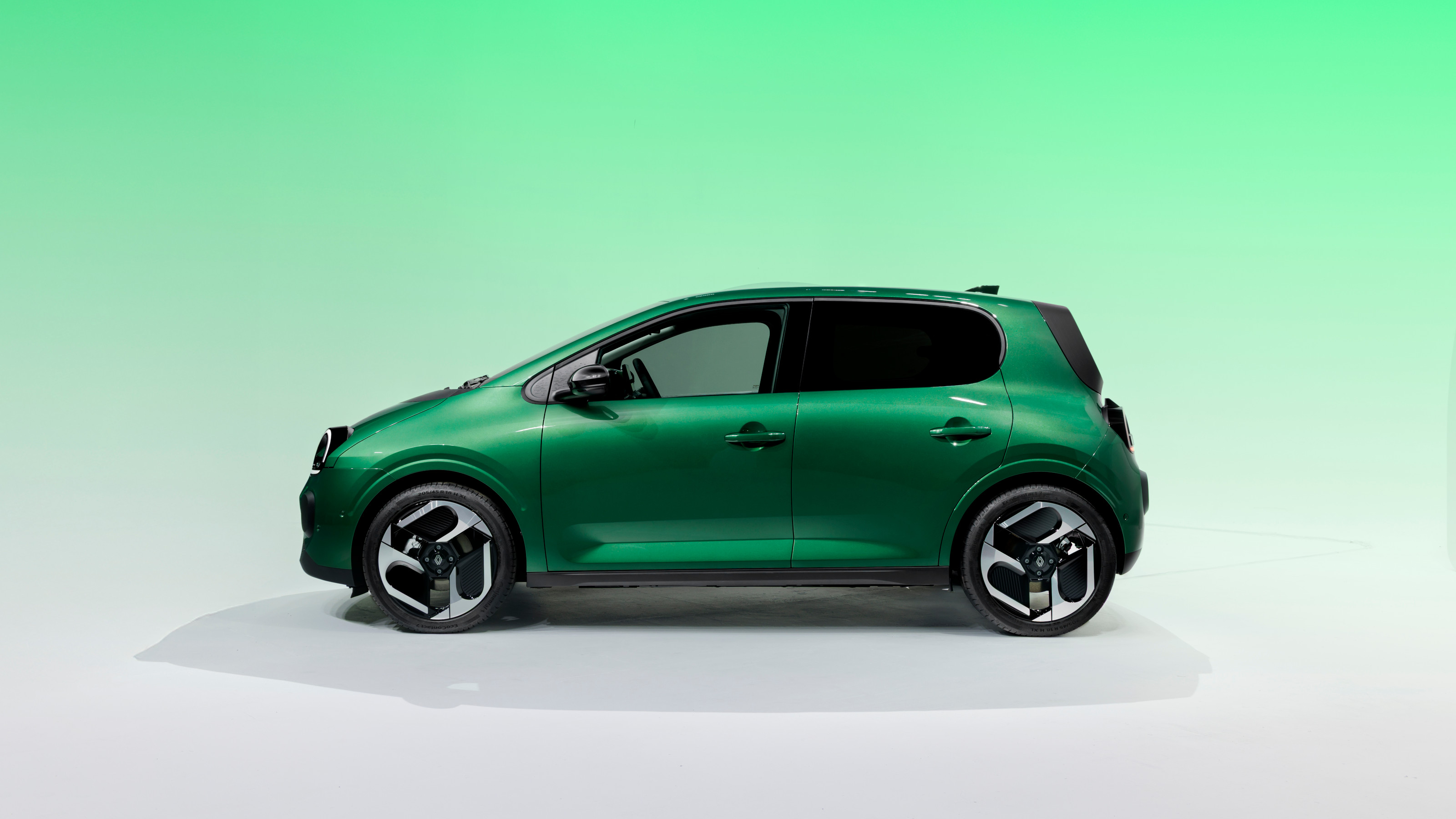 All hail the compact new Renault Twingo E-Tech – the city car is back in style
All hail the compact new Renault Twingo E-Tech – the city car is back in styleRenault continues to pay homage to its heritage by combining it with 21st-century technology. The new Twingo E-Tech is another winner
-
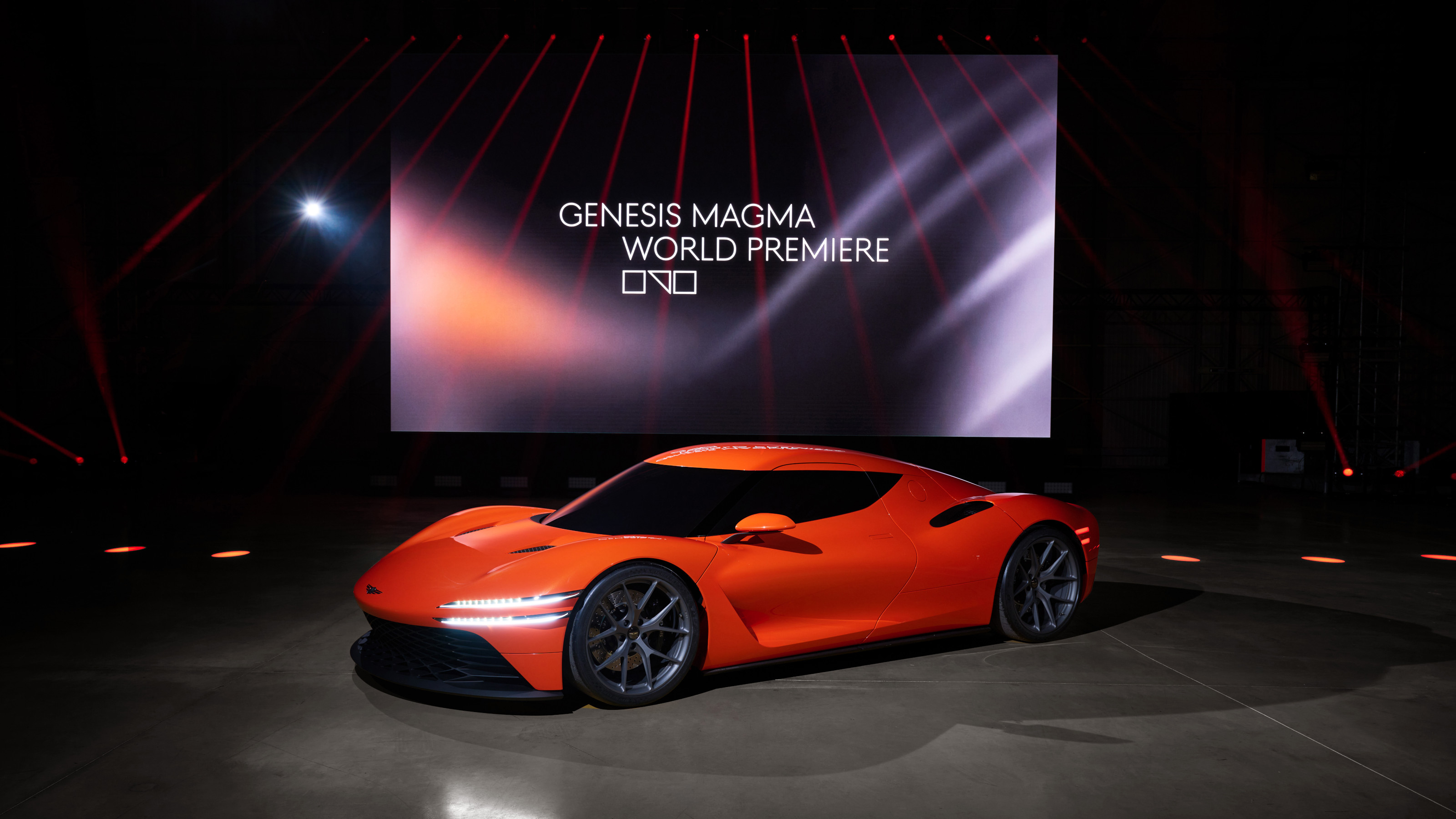 Genesis turns up the heat with its new Magma performance sub-brand
Genesis turns up the heat with its new Magma performance sub-brandGenesis has revealed the hot new GV60 Magma and striking Magma GT Concept in its quest to own luxury performance
-
 Around London in sybaritic silence with the majestic all-electric Lunaz Phantom V
Around London in sybaritic silence with the majestic all-electric Lunaz Phantom VClassic electrifier Lunaz has turned its skilled hands to the Rolls-Royce Phantom V. We sample the ultimate in zero-emission luxury on the streets of London
-
 Avatr Vision Xpectra concept transforms cars into ‘emotionally intelligent companions’
Avatr Vision Xpectra concept transforms cars into ‘emotionally intelligent companions’Revealed in Munich, electric car maker Avatr’s futuristic Vision Xpectra is a car that is not only beautiful, but a true form of ‘emotive luxury’
-
 Dacia wants to make small cars great again – all hail the new Hipster Concept
Dacia wants to make small cars great again – all hail the new Hipster ConceptThe best way to minimise energy use in all its forms is to downsize. The Dacia Hipster Concept is a smart way of making a practical car way more pint-sized
-
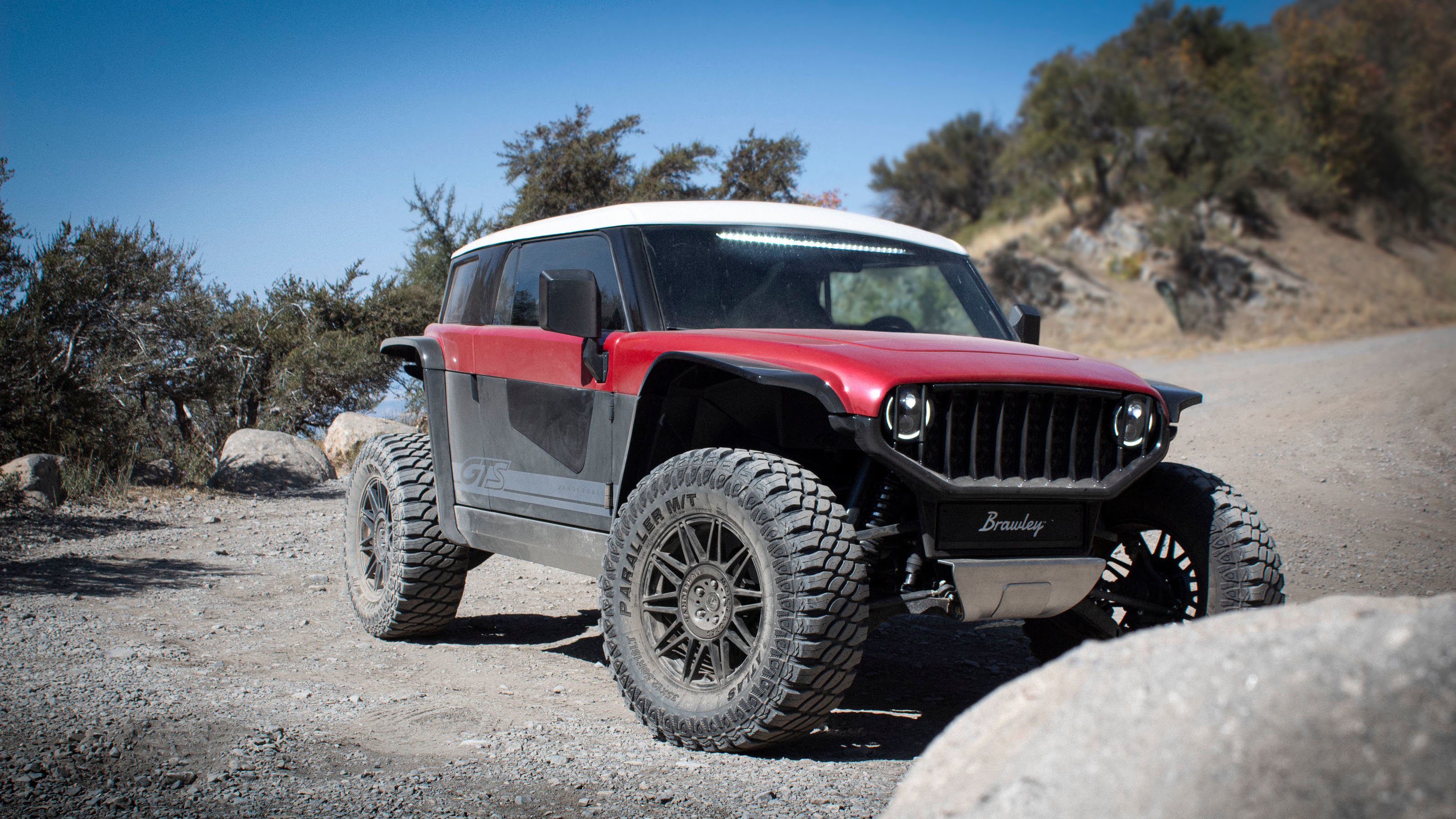 The Vanderhall Brawley GTS is a compact but mighty electric off-roader
The Vanderhall Brawley GTS is a compact but mighty electric off-roaderDeliveries of Vanderhall’s Brawley GTS have started, bringing zero-emission trail driving to enthusiasts across America
-
 The Aemotion is a tilting two-seater designed to zip through city traffic
The Aemotion is a tilting two-seater designed to zip through city trafficAn electric commuting machine, the Aemotion provides swift, safe and enclosed transport for two